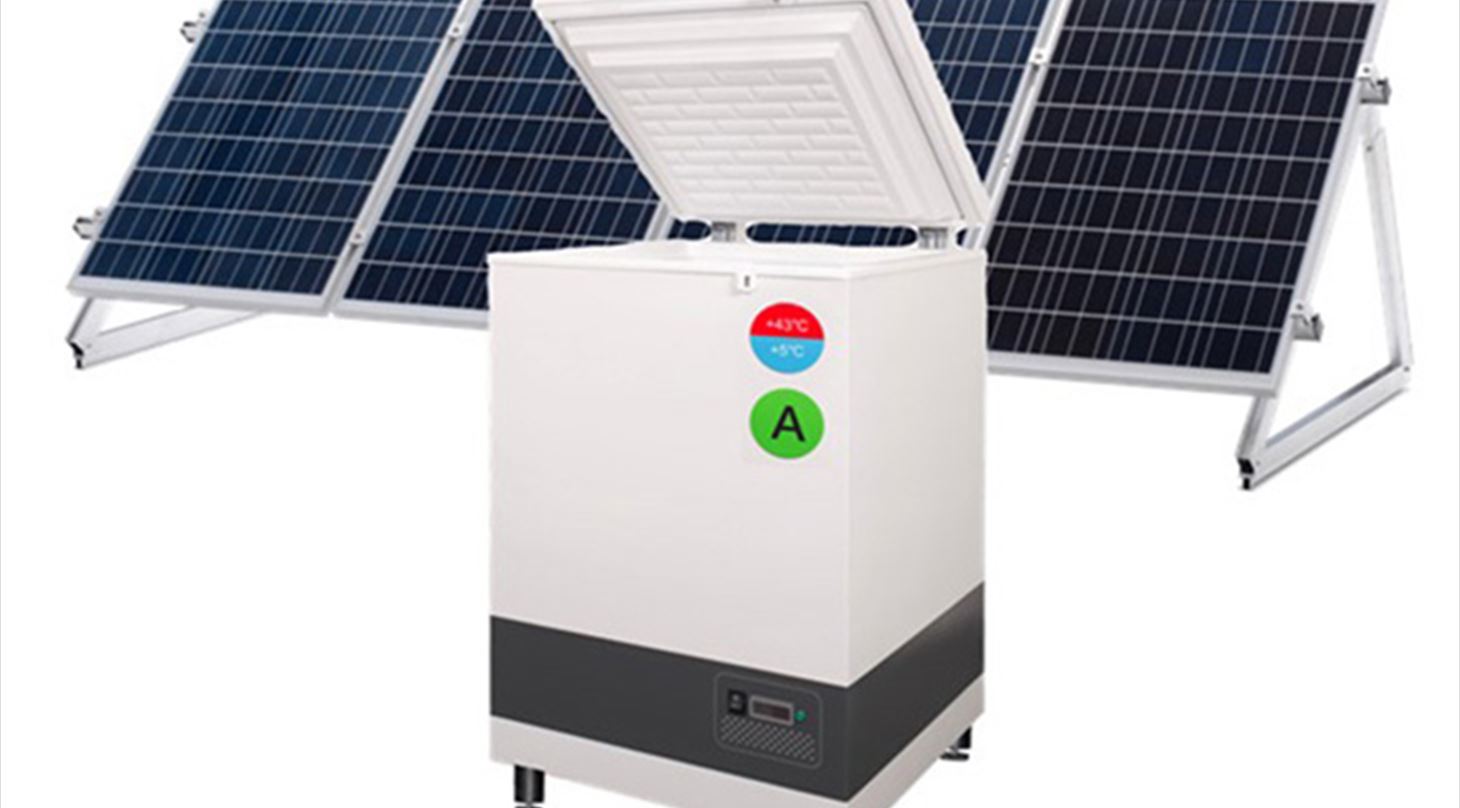
The missing link of the food cold chain: Solar direct drive cooling appliances
In many regions of the world, the lack of cooling facilities for food conservation in commercial sectors like fishing, agriculture, or in the food retail business leads to a huge food waste which is a severe barrier for economic development.
The Food and Agriculture Organization of the United Nations (FAO) has estimated that 8 % of the global CO2 emissions are related to food waste, which is equivalent to 4.4 GtCO2 eq per year. In developing countries, the waste happens especially in food production or in post harvesting processes.
- The aim of this project is to develop robust and versatile refrigerators and freezers for solar PV that are adapted to the off-grid market – i.e., markets with no power supply. This will fill the uncovered need for cooling of food between the manufacturer or central cold stores (where and if they exist) and the end consumer.
The Danish company Vestfrost Solutions in Esbjerg is successfully producing small solar powered coolers for vaccine storage.
A technology with energy storage in an ice bank instead of an electrical battery is used along with a technology for starting the compressor in the refrigeration system with power directly from the PV-panels. Thus, there is no need for expensive and vulnerable batteries. This technology has been named “Solar Direct Drive” (SDD). A technology which – through the years – has been successfully developed through several research and development projects with support from the Danish Energy Agency in support schemes like EUDP.
The use of SDD coolers in the medical sector has created a demand for a much more powerful and cheaper system designed for the commercial sector – a desire that comes from various end consumers ranging from the small fisherman wanting to cool his/her fish or the small local grocery store that delivers products to families living in areas with no power supply or a very unstable grid supply.
The market potential is very big and increasing as developing countries are experiencing economic growth. By upscaling the technology from the medical sector and adjusting the products to meet the needs of the commercial sector, this project seeks to open a very attractive market potential for Vestfrost Solutions and support economic growth in rural areas.
The project includes theoretical studies, experiments, design and construction of prototypes, as well as field testing in Kenya and in the Philippines.
The five phases of the project are:
- Determination of appliance specifications
- Research and development of the concept
- Prototype construction and functional analysis
- Field monitoring and analysis/evaluation
- Dissemination of results.
Project start September 2022. Expected completion April 2026.
The project is funded by the Danish Energy Agency (EUDP program).
Project participants: Danish Technological Institute (project manager), Vestfrost Solutions, LS Control A/S,
DTU Mechanical Engineering, WWF World Wildlife Fund and Arla Foods amba.